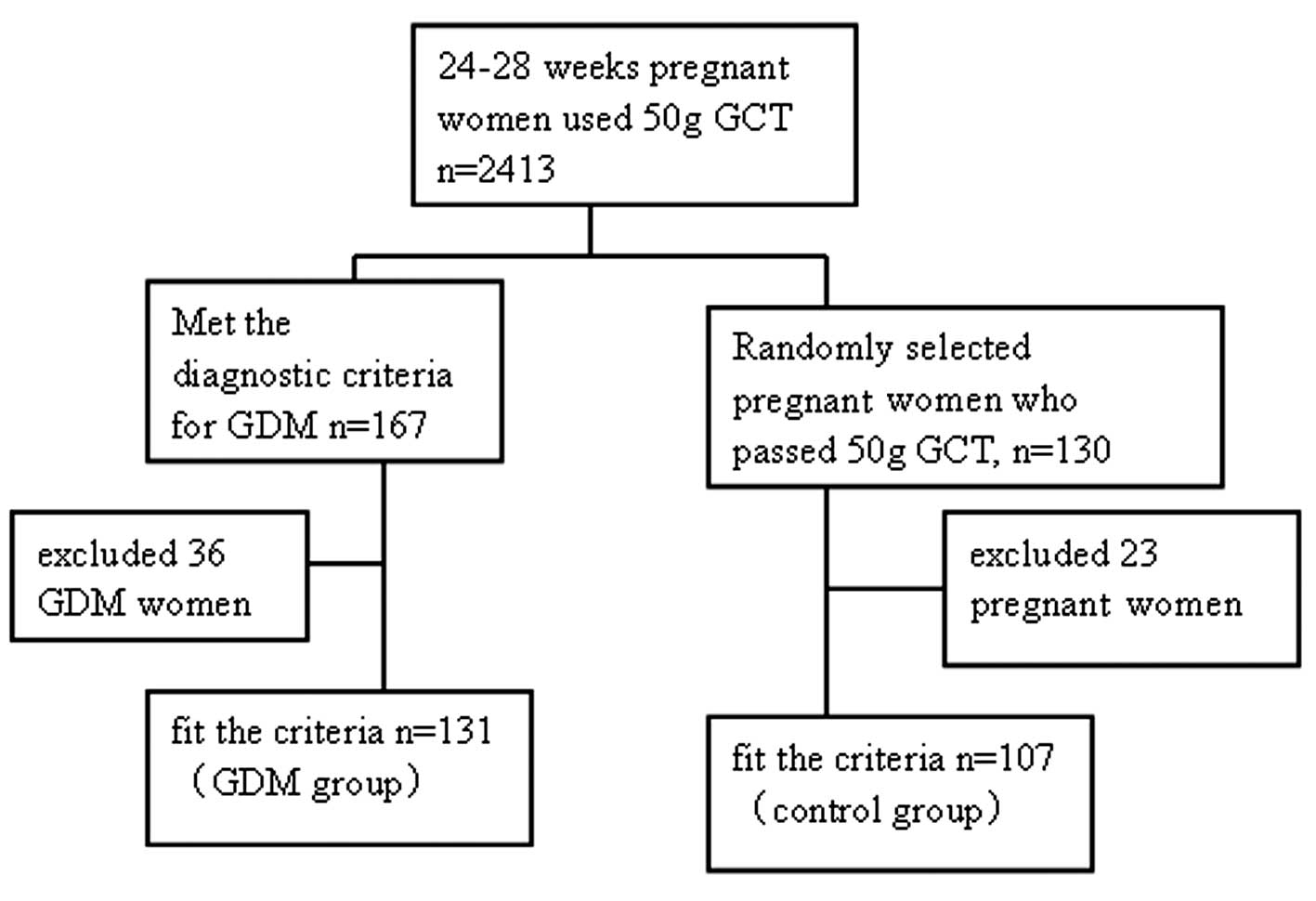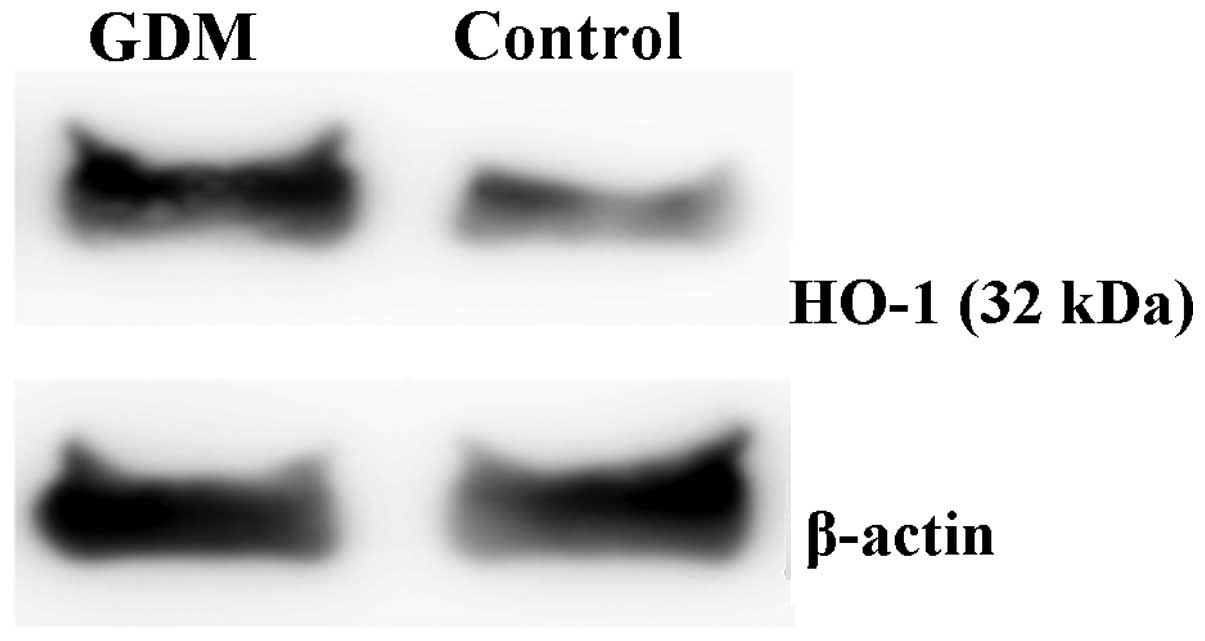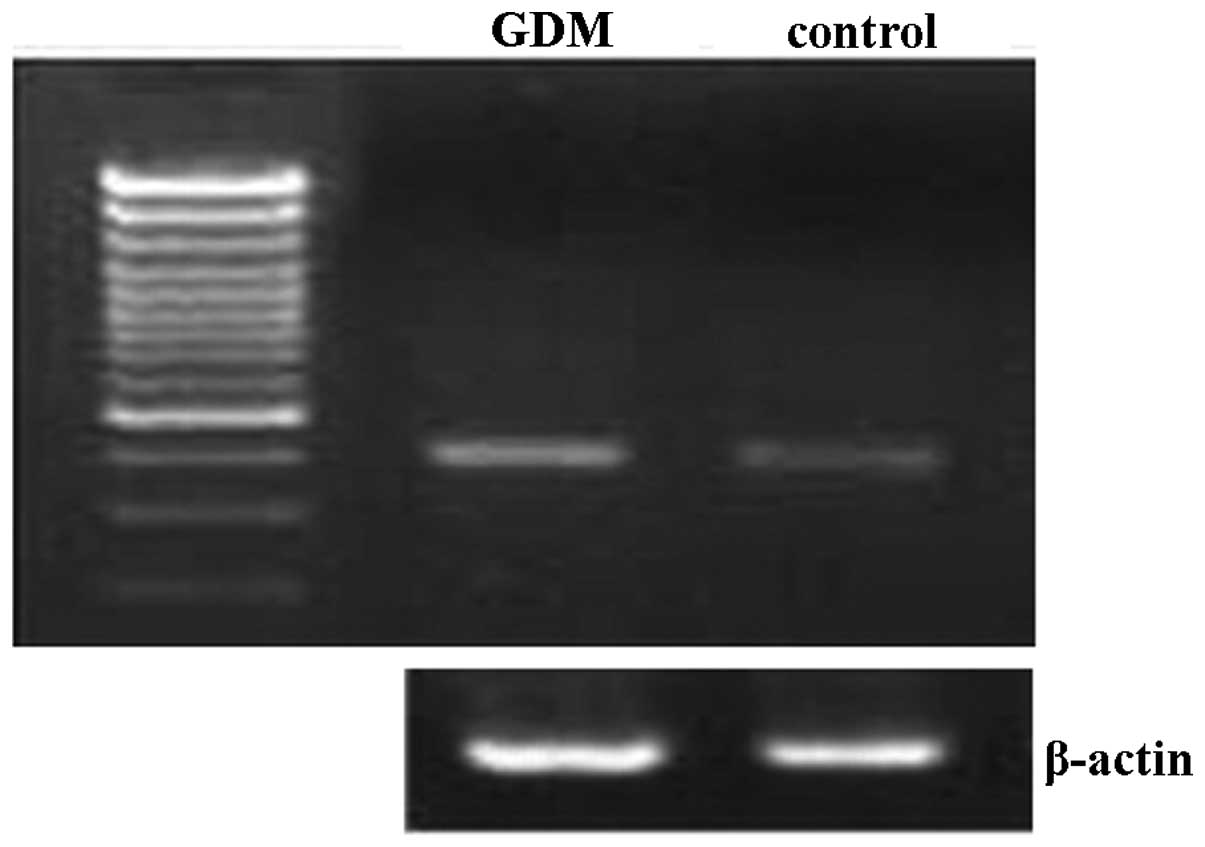|
1
|
Ferrara A: Increasing prevalence of
gestational diabetes mellitus: a public health perspective.
Diabetes Care. 30(Suppl2): S141–146. 2007. View Article : Google Scholar : PubMed/NCBI
|
|
2
|
Damm P: Gestational diabetes mellitus and
subsequent development of overt diabetes mellitus. Danish Med
Bulletin. 45:495–509. 1998.PubMed/NCBI
|
|
3
|
Engeland A, Bjørge T, Daltveit AK, et al:
Risk of diabetes after gestational diabetes and preeclampsia. A
registry-based study of 230,000 women in Norway. Eur J Epidemiol.
26:157–163. 2011. View Article : Google Scholar : PubMed/NCBI
|
|
4
|
Mukerji G, Chiu M and Shah BR: Impact of
gestational diabetes on the risk of diabetes following pregnancy
among Chinese and South Asian women. Diabetologia. 55:2148–2153.
2012. View Article : Google Scholar : PubMed/NCBI
|
|
5
|
World Health Organization. Geneva: WHO;
1999, Definition, diagnosis and classification of diabetes mellitus
and its complications. Report of a WHO consultation. Pt 1:
diagnosis and classification of diabetes mellitus.
|
|
6
|
Ceriello A and Motz E: Is oxidative stress
the pathogenic mechanism underlying insulin resistance, diabetes,
and cardiovascular disease? The common soil hypothesis revisited.
Arterioscler Thromb Vasc Biol. 24:816–823. 2004. View Article : Google Scholar
|
|
7
|
Li H, Horke S and Förstermann U: Oxidative
stress in vascular disease and its pharmacological prevention.
Trends Pharmacol Sci. 34:313–319. 2013. View Article : Google Scholar : PubMed/NCBI
|
|
8
|
Llesuy SF and Tomaro ML: Heme oxygenase
and oxidative stress. Evidence of involvement of bilirubin as
physiological protector against oxidative damage. Biochim Biophys
Acta. 1223:9–14. 1994. View Article : Google Scholar : PubMed/NCBI
|
|
9
|
Tanaka S, Akaike T, Fang J, et al:
Antiapoptotic effect of haem oxygenase-1 induced by nitric oxide in
experimental solid tumour. Br J Cancer. 88:902–909. 2003.
View Article : Google Scholar : PubMed/NCBI
|
|
10
|
Brownlee M: Biochemistry and molecular
cell biology of diabetic complications. Nature. 414:813–820. 2001.
View Article : Google Scholar : PubMed/NCBI
|
|
11
|
Abraham NG and Kappas A: Pharmacological
and clinical aspects of heme oxygenase. Pharmacol Rev. 60:79–127.
2008. View Article : Google Scholar : PubMed/NCBI
|
|
12
|
Grochot-Przeczek A, Dulak J and Jozkowicz
A: Heme oxygenase-1 in neovascularisation: A diabetic perspective.
Thromb Haemost. 104:424–431. 2010. View Article : Google Scholar : PubMed/NCBI
|
|
13
|
Jonas JC, Guiot Y, Rahier J and Henquin
JC: Haeme-oxygenase 1 expression in rat pancreatic beta cells is
stimulated by supraphysiological glucose concentrations and by
cyclic AMP. Diabetologia. 46:1234–1244. 2003. View Article : Google Scholar
|
|
14
|
American Diabetes Association. Gestational
diabetes mellitus. Diabetes Care. 27(Suppl 1): S88–S90. 2004.
View Article : Google Scholar
|
|
15
|
Al-Shebly MM and Mansour MA: Evaluation of
oxidative stress and antioxidant status in diabetic and
hypertensive women during labor. Oxid Med Cell Longev.
2012:3297432012.PubMed/NCBI
|
|
16
|
Suhail M, Patil S, Khan and Siddiqui S:
Antioxidant vitamins and lipoperoxidation in non-pregnant,
pregnant, and gestational diabetic women: Erythrocytes osmotic
fragility profiles. J Clin Med Res. 2:266–273. 2010.
|
|
17
|
Biri A, Onan A, Devrim E, et al: Oxidant
status in maternal and cord plasma and placental tissue in
gestational diabetes. Placenta. 27:327–332. 2006. View Article : Google Scholar : PubMed/NCBI
|
|
18
|
Chen X and Scholl TO: Oxidative stress:
changes in pregnancy and with gestational diabetes mellitus. Curr
Diab Rep. 5:282–288. 2005. View Article : Google Scholar : PubMed/NCBI
|
|
19
|
Araujo JA, Zhang M and Yin F: Heme
oxygenase-1, oxidation, inflammation, and atherosclerosis. Front
Pharmacol. 3:1192012. View Article : Google Scholar : PubMed/NCBI
|
|
20
|
Barbagallo I, Marrazzo G, Frigiola A, et
al: Role of carbon monoxide in vascular diseases. Curr Pharm
Biotechnol. 13:787–796. 2012. View Article : Google Scholar : PubMed/NCBI
|
|
21
|
Maines MD: The heme oxygenase system: a
regulator of second messenger gases. Annu Rev Pharmacol Toxicol.
37:517–554. 1997. View Article : Google Scholar : PubMed/NCBI
|
|
22
|
Laybutt DR, Glandt M, Xu G, et al:
Critical reduction in beta-cell mass results in two distinct
outcomes over time. Adaptation with impaired glucose tolerance or
decompensated diabetes. J Biol Chem. 278:2997–3005. 2003.
View Article : Google Scholar
|
|
23
|
Bao W, Rong S, Zhang M, et al: Plasma heme
oxygenase-1 concentration in relation to impaired glucose
regulation in a non-diabetic Chinese population. PLoS One.
7:e322232012. View Article : Google Scholar : PubMed/NCBI
|
|
24
|
Bao W, Song F, Li X, et al: Plasma heme
oxygenase-1 concentration is elevated in individuals with type 2
diabetes mellitus. PLoS One. 5:e123712010. View Article : Google Scholar : PubMed/NCBI
|
|
25
|
Iori E, Pagnin E, Gallo A, et al: Heme
oxygenase-1 is all important modulator in limiting glucose-induced
apoptosis in human umbilical vein endothelial cells. Life Sci.
82:383–392. 2008. View Article : Google Scholar : PubMed/NCBI
|
|
26
|
Sacerdoti D, Colombrita C, Ghattas MH, et
al: Heme oxygenase-1 transduction in endothelial cells causes
downregulation of monocyte hemoattractant protein-1 and of genes
involved in inflammation and growth. Cell Mol Biol
(Noisy-le-grand). 51:363–370. 2005.
|
|
27
|
Bruce CR, Carey AL, Hawley JA and Febbraio
MA: Intramuscular heat shock protein 72 and heme oxygenase-1 mRNA
are reduced in patients with type 2 diabetes: evidence that insulin
resistance is associated with a disturbed antioxidant defense
mechanism. Diabetes. 52:2338–2345. 2003. View Article : Google Scholar
|
|
28
|
Calabrese V, Mancuso C, Sapienza M, et al:
Oxidative stress and cellular stress response in diabetic
nephropathy. Cell Stress Chaperones. 12:299–306. 2007. View Article : Google Scholar : PubMed/NCBI
|
|
29
|
Qiu C, Hevner K, Enquobahrie DA and
Williams MA: Maternal serum heme-oxygenase-1 (HO-1) concentrations
in early pregnancy and subsequent risk of gestational diabetes
mellitus. PLoS One. 7:e480602012. View Article : Google Scholar : PubMed/NCBI
|

















